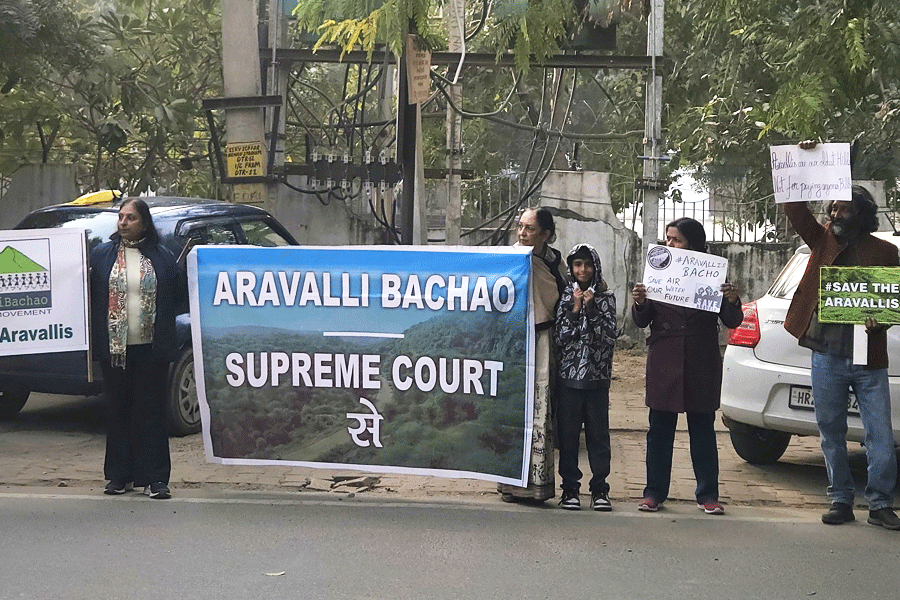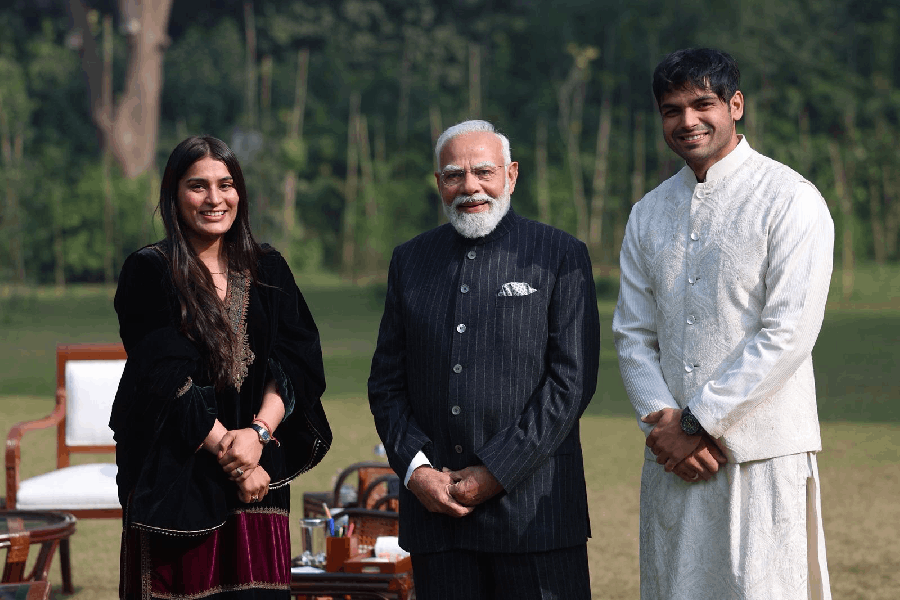What should newspaper readers make of reports of anti-Christian violence, most recently in Uttar Pradesh? Recently, a journalist friend said he was sceptical of this reportage because it was disproportionate: too much attention was being paid to tiny incidents that were often, upon inquiry, shown to have no sectarian basis. The rape of a nun in Jhabua of which so much was made, was upon investigation found to have been apparently committed by a Christian. Similarly, the attacks on padres in Uttar Pradesh were shown to have non-sectarian motives: robbery or anger about school admissions. The same disproportion, according to my journalist friend, marred the reportage of the violence in Dangs because the violence resulted in no deaths and the destruction only of a couple of makeshift chapels.
The killing of Graham Staines, he argued, had been similarly twisted by a secularist dogmatism. There was a perverse insistence on denying the tension that conversion had created amongst tribal communities and an unreasonable insistence that everyone acknowledge that Dara Singh was a Bajrang Dal activist in the absence of any proof.
The national minorities commission attacked the D.P. Wadhwa report for emphasizing the tension created by conversion. The killing of Staines, the NMC said, was an act of sectarian murder which had nothing to do with anti-conversion unrest. My friend was puzzled: Wadhwa had not denied the Hindu fundamentalist nature of Dara Singh's activities; he had taken note of his goonery in the cause of gau raksha, his attacks upon Muslim butchers and their herds, he had praised Gladys Staines for her generosity in forgiving her husband's murderers, so why were his credentials being questioned by the NMC? Only because his unwillingness to certify that Dara was a member of the Bajrang Dal seemed to support L.K. Advani's categorical denial that the Bajrang Dal had anything to do with the Staines murder. This, according to my sceptical friend, was a case of secularist prejudice swamping balance and objectivity.
So is it the case that secularists and the media have gone overboard and distorted everyday occurrences by classifying them as sectarian when, in fact, they spring from a variety of motives? Has their eagerness to put the practice of a chauvinist majoritarian party under scrutiny during its first extended period in office, led them into error? Have they become paranoid, seeing patterns where none exist, reading political conspiracy into the normal tensions of civil society?
I don't think so.
There is nothing unnatural about the media being hyper-alert in the matter of communal relations during the incumbency of a party that has a long record of hostility towards minorities. Jöerg Haider's Freedom Party is part of an Austrian coalition government and the European press will subject the behaviour of the leaders and workers of that party to intense scrutiny because Haider has been public about his sympathy for fascism and his anti-semitism. This is as it should be because one of the tasks of a free press is to look for straws in the wind. To treat Austrian politics or Indian politics as business as usual at times like this would be irresponsible.
On the other hand, if a newspaper investigating the rape of a nun has implied that there was a communal motive behind the crime and later finds that this was not the case, the paper has made a dreadful mistake and should bend over backwards to publish a correction. The mistake is dreadful because it has aggravated communal distrust, imputed political motive unjustly and created an unwarranted sense of siege and insecurity amongst Christians. The press needs to be careful as much as it needs to be alert.
The question still remains: do these attacks on Christians add up to something or are they a set of discrete events unconnected by ideology, communal feeling or politics? My sense is that together these attacks represent something more than a bunch of random occurrences and something less than an organized political attack on a vulnerable minority.
The election of a stable coalition government organized and dominated by the Bharatiya Janata Party was a signal to supporters of Hindu politics that their party was in power. Hindutva-hearties, half-pant Hindustanis, knicker-nationalists decided that with their government installed it was time to test the waters for what was permissible in the new dispensation. Perhaps the best way to understand what happened is by analogy. In 1937 the Congress formed governments in eight Indian provinces for the first time. The new colonial constitution of 1935 had extended the right to vote and, more importantly, had replaced dyarchy where the important portfolios were held by British officials with something like responsible cabinet government at the provincial level. Congress supporters were euphoric.
Disconcertingly for the Congress, there were a rash of sectarian incidents that disturbed the peace in the provinces it ruled, largely initiated by Hindus. These were disputes centred on issues such as the right to play music before mosques, unrestricted routes for Holi processions, the right to perform rathyatras and so on. Hindu processionists were trying to establish their 'right' to do all these things and they hoped that 'their' government would recognize this 'right', unlike the colonial state which had always, in these matters, invoked precedent.
There was no evidence to suggest that the Congress provincial leadership or their administrations sanctioned or patronized such violence. On the contrary, they were deeply embarrassed by it. However, when the hostile Urdu press or the Muslim League accused Congress governments of complicity, these governments and the party reacted defensively. The accusations were canards, the violence was local, the real reason was a land dispute or ancient enmity, the district magistrate or the superintendent of police had taken prompt action. This sounds familiar; we've heard the BJP and its supporters parroting these phrases or phrases generically like them every time a 'Christian' incident occurred.
As in 1937, the central leadership of the BJP is unlikely to be behind these incidents. Atal Behari Vajpayee would have to be mad to want to launch a campaign against Christians at a time when the BJP's debut on the national stage is under a microscope. At the provincial or local level, though, the sangh parivar is likely to be much less worried about national consequences. In 1937, some rathyatras were led by local Congressmen and some belligerent Ram lila committees were chaired by men who were simultaneously leaders of that district's Congress. Congress ministers, like Purshottamdas Tandon and Sampurnanand, who were well-known Hindi-wallahs hostile to Urdu and close to organizations like the Hindu Mahasabha, helped by their words and actions to create the impression that the Congress (deficient as it was in Muslim members of the legislative assembly) was a Hindu party.
Now the BJP is a Hindu party or at least a party that affirms Hindutva, an inclusive ideology which grants Muslims and Christians the right to be Hindus in India. When it came to power the BJP's constituency in civil society had reason
to believe that this was a good time to
put converts and missionaries in their place.
The BJP is a party that has made a political career out of minority-bashing; it achieved power by explicitly campaigning for the destruction of the Babri Masjid and then tacitly endorsing it. It has virtually no Muslim or Christian faces in its ranks or in its leadership. If the election of a party as anxiously secular as the Congress in 1937 could set off a wave of majoritarian self-assertion, it is more than likely that groups that wished to settle scores with Christian communities or organizations felt encouraged by the instatement of the frankly Hindu BJP.
It is a feeling that the reactions of the prime minister and the home minister in the aftermath of the violence in Dangs would have done nothing to discourage. Advani, apropos of nothing, released a list adding up the millions of dollars sent to India by foreign Christian organizations. The list didn't specify what these funds were meant to achieve, but the implication was clear: this was hard currency for harvesting Hindu souls.
The prime minister called for a national debate on conversion; thus the two most important functionaries of the Indian state suggested not so subtly that Christians, through their missionary activities, had brought violence upon themselves. The sporadic violence against Christians isn't a conspiracy orchestrated by the BJP but neither is it a figment of the journalistic imagination. It is a symptom of the 'Hindu' assertiveness encouraged by an increasingly majoritarian state.
 Tuesday, 23 December 2025
Tuesday, 23 December 2025










